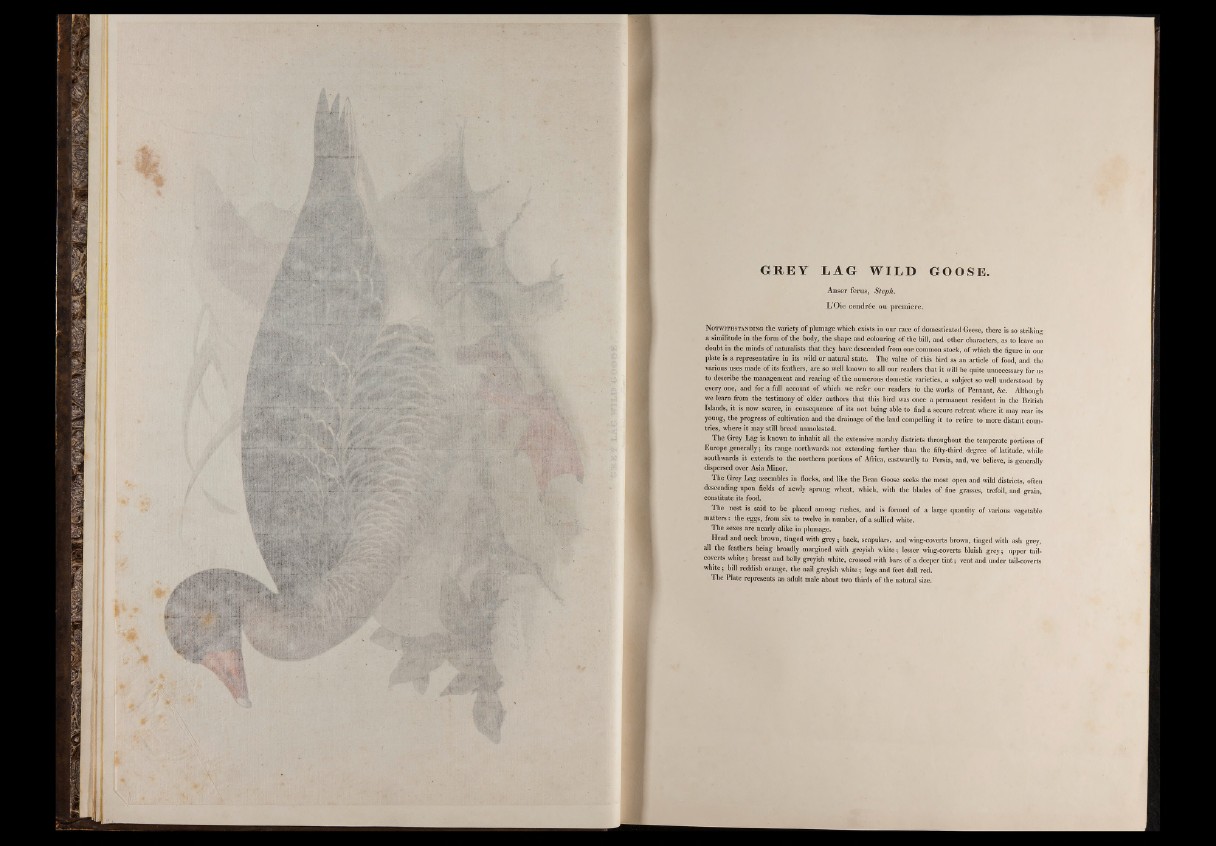
H I K B í f
' J S
S k
G R E Y LAG WILD GOOSE.
Anser férus, Steph.
L’Oie cendrée ou premiere.
N otwithstanding the variety of plumage which exists in our race of domesticated Geese, there is so striking
a similitude in the form o f the body, the shape and colouring of the bill, and other characters, as to leave no
doubt in the minds of naturalists that they have descended from one common stock, of which the figure in our
plate is a representative in its wild or natural state. The value of this bird as an article of food, and the
various uses made of its feathers, are so well known to all our readers that it will be quite unnecessary for us
to describe the management and rearing of the numerous domestic varieties, a subject so well understood by
every one, and for a full account of which we refer our readers to the works of Pennant, &c. Although
we learn from the testimony of older authors that this bird was once a permanent resident in the British
Islands, it is now scarce, in consequence of its not being able to find a secure retreat where it may rear its
young, the progress of cultivation and the drainage of the land compelling it to retire to more distant countries,
where it may still breed unmolested.
The Grey Lag is known to inhabit all the extensive marshy districts throughout the temperate portions of
Europe generally ; its range northwards not extending further than the fifty-third degree of latitude, while
southwards it extends to the northern portions of Africa, eastwardly to Persia, and, we believe, is generally
dispersed over Asia Minor.
The Grey Lag assembles in flocks, and like the Bean Goose seeks the most open and wild districts, often
descending upon fields o f newly sprung wheat, which, with the blades of fine grasses, trefoil, and grain,
constitute its food.
The nest is said to be placed among rushes, and is formed of a large quantity of various vegetable
matters : the eggs, from six to twelve in number, of a sullied white.
The sexes are nearly alike in plumage.
Head and neck brown, tinged with grey ; back, scapulars, and wing-coverts brown, tinged with ash grey,
all the feathers being broadly margined with greyish white ; lesser wing-coverts bluish grey ; upper tail-
coverts white ; breast and belly greyish white, crossed with bars of a deeper tint ; vent and under tail-coverts
white ; bill reddish orange, the nail greyish white ; legs and feet dull red.
The Plate represents an adult male about two thirds of the natural size.